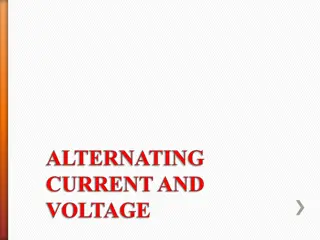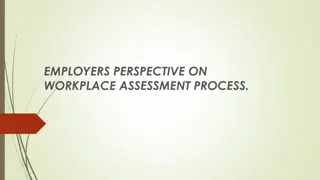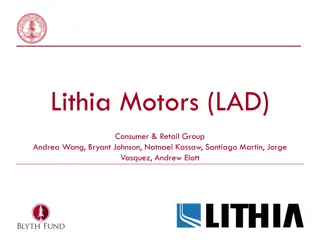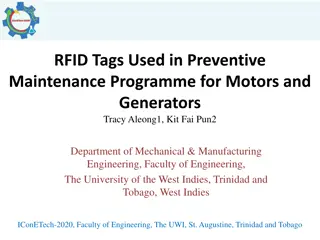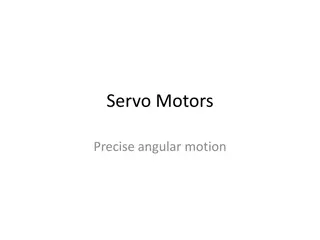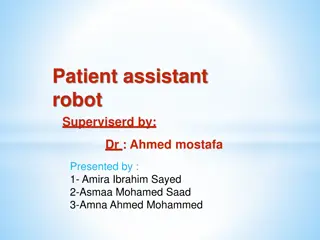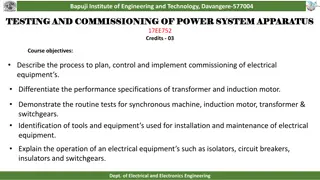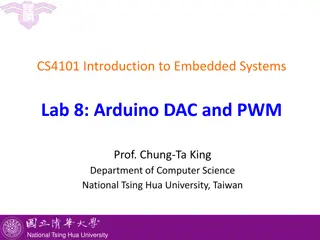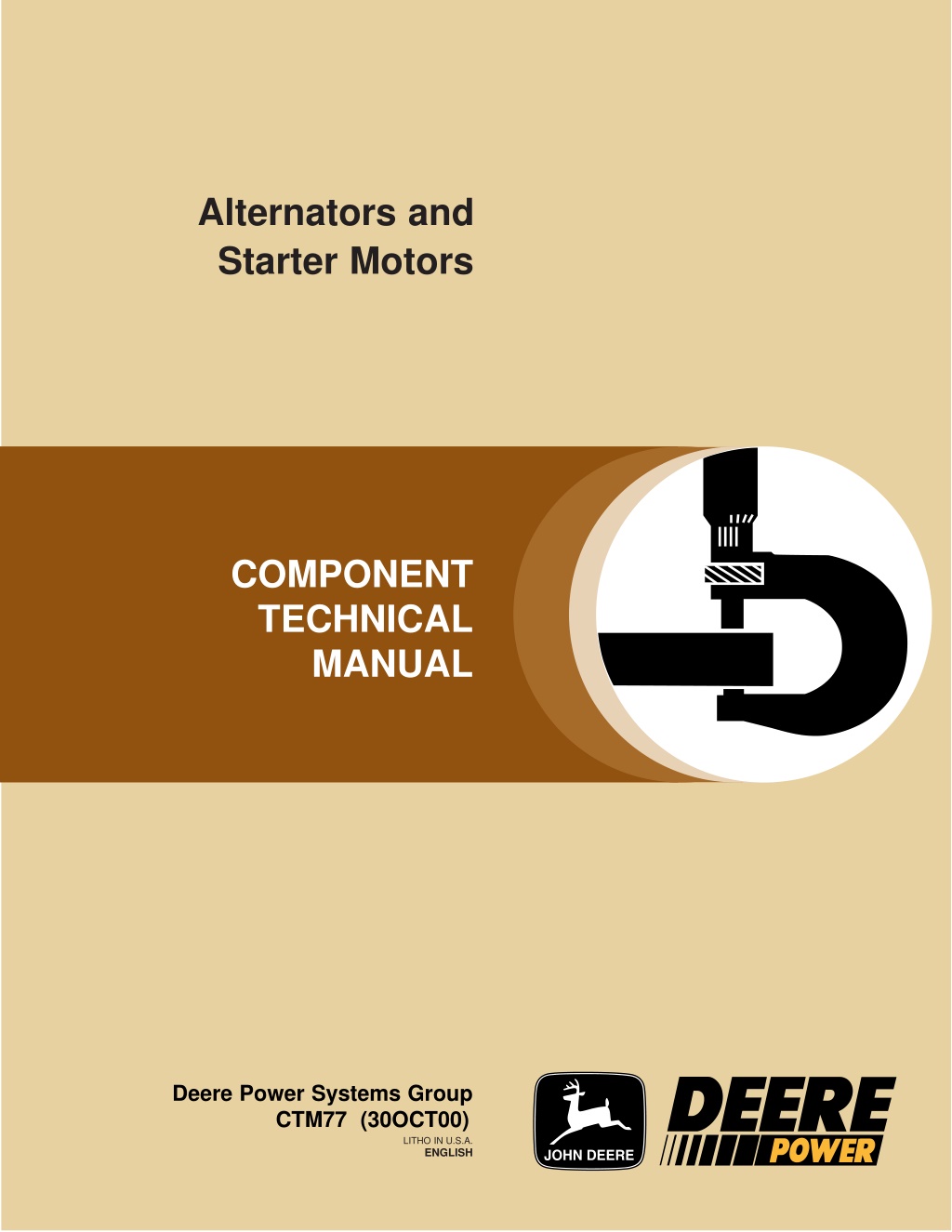
John Deere Alternators & Starter Motors Service Repair Manual Instant Download
Please open the website below to get the complete manualnn//
Download Presentation

Please find below an Image/Link to download the presentation.
The content on the website is provided AS IS for your information and personal use only. It may not be sold, licensed, or shared on other websites without obtaining consent from the author. Download presentation by click this link. If you encounter any issues during the download, it is possible that the publisher has removed the file from their server.
E N D
Presentation Transcript
Alternators and Starter Motors COMPONENT TECHNICAL MANUAL Deere Power Systems Group CTM77 (30OCT00) LITHO IN U.S.A. ENGLISH
Introduction Foreword This manual is written for an experienced technician. Essential tools required in performing certain service work are identified in this manual and are recommended for use. Component Technical Manuals are concise service guides for specific components. They are written as stand-alone manuals covering multiple machine applications. Live with safety: Read the safety messages in the introduction of this manual and the cautions presented throughout the text of the manual. Fundamental service information is available from other sources covering basic theory of operation, fundamentals of troubleshooting, general maintenance, and basic types of failures and their causes. CAUTION: This is the safety-alert symbol. When you see this symbol on the machine or in this manual, be alert to the potential for personal injury. This manual covers alternator and starter motor applications for all John Deere diesel engines both older 300/400/500-Series and newer POWERTECH 2.9 L 12.5 L engines. This manual covers components for both Deere OEM engines and Deere machine engine applications. This Component Technical Manual (CTM) contains the latest available instructions necessary to repair engine alternators and starter motors. It includes theory of operation, and diagnostic and testing procedures to help troubleshoot and understand potential failure modes. NOTE: Remanufactured alternators and starter motors are available for replacement on most applications listed in this manual. Refer to John Deere s Remanufactured Components catalogs to cross-reference your original equipment part number and obtain a suitable remanufactured replacement starter or alternator. The information is organized in sections and groups by various suppliers. At the beginning of each repair group are summary listings of all applicable essential tools, service equipment and tools, other materials needed to do the job, service parts kits, specifications, wear tolerances, and torque values. POWERTECH is a registered trademark of Deere & Company. IFC,CTM77 19 18SEP00 1/1 CTM77 (30OCT00) Alternators and Starter Motors 103000 PN=2
Introduction John Deere Dealers IMPORTANT: Please copy this page listing changes and route it through your service department. This CTM is a complete revision of CTM77, Alternators and Starter Motors, dated 15 MAR 97. This manual covers alternators and starter motors on most John Deere applications manufactured since 1972, except 40, 50 and 55 Series Utility Tractors. New information added to this manual includes: Section 45 Leece-Neville Alternators Section 50 Prestolite Alternators Revised information includes: 1. Updated specifications for all current alternators and starter motors, including those adopted since the 15 MAR 97 edition. 2. Added new applications and specifications for all current alternators and starter motors. OUO1004,0000B49 19 15SEP00 1/1 CTM77 (30OCT00) Alternators and Starter Motors 103000 PN=3
https://www.ebooklibonline.com Hello dear friend! Thank you very much for reading. Enter the link into your browser. The full manual is available for immediate download. https://www.ebooklibonline.com
Contents 05 SECTION 05 Introduction and Safety Information Group 05 Safety Group 10 General Information Group 15 Electrical System Basic Information and Wiring Diagrams SECTION 40 Magneton Alternators Group 05 Magneton Alternator Theory of Operation Group 10 Magneton Alternator Repair 10 SECTION 45 Leece-Neville Alternators Group 05 Leece-Neville Alternator Theory of Operation Group 10 Leece-Neville Alternator Repair SECTION 10 Delco-Remy Alternators Group 05 Delco-Remy Alternator Theory of Operation Group 10 Delco-Remy (Delcotron) 10SI, 12SI and 15SI Alternator Repair Group 15 Delco-Remy (Delcotron) 21SI Alternator Repair SECTION 50 Prestolite Alternators Group 05 Prestolite Alternator Theory of Operation Group 10 Prestolite Alternator Repair 15 SECTION 15 Motorola Alternators Group 05 Motorola Alternator Theory of Operation Group 10 Motorola 8E-Series Alternator Repair Group 15 Motorola HC-, MA-, MR-Series Alternator Repair Group 20 Motorola A-, RA-, 8AR-Series Alternator Repair Group 25 Motorola SA-Series Alternator Repair Group 30 Motorola TA-Series Alternator Repair SECTION 60 Delco-Remy Starter Motors Group 05 Starting Circuit Theory of Operation Group 10 Delco-Remy 10/20/22/25/27/28MT Starter Motor Repair Group 15 Delco-Remy 30MT, 35MT, 37MT Starter Motor Repair Group 20 Delco-Remy 40MT, 41MT, 42MT, 50MT Starter Motor Repair 20 25 SECTION 65 John Deere/Denso Starter Motors Group 05 Starting Circuit Theory of Operation Group 10 John Deere/Denso Conventional Starter Motor Repair Group 15 John Deere/Denso Gear Reduction Starter Motor Repair SECTION 20 Niehoff Alternators Group 05 Niehoff Alternator Theory of Operation Group 10 Niehoff 12-Volt, 110-Amp Alternator Repair Group 15 Niehoff 24-Volt, 50-Amp Alternator Repair 30 SECTION 70 Robert Bosch Starter Motors Group 05 Starting Circuit Theory of Operation Group 10 Robert Bosch Starter Motor Repair SECTION 25 Denso Alternators Group 05 Denso Alternator Theory of Operation Group 10 Denso Alternator with Add-On Regulator Repair Group 15 Denso Alternator with Built-In Regulator Repair 35 SECTION 75 Iskra Starter Motors Group 05 Starting Circuit Theory of Operation Group 10 Iskra Starter Motor Repair SECTION 30 Robert Bosch Alternators Group 05 Robert Bosch Alternator Theory of Operation Group 10 Robert Bosch Alternator Repair 40 SECTION 80 Valeo Starter Motors Group 05 Starting Circuit Theory of Operation Group 10 Valeo Starter Motor Repair SECTION 35 Valeo Alternators Group 05 Valeo Alternator Theory of Operation Group 10 Valeo Alternator Repair Group 15 Valeo A13N-Series Alternator Repair 45 All information, illustrations and specifications in this manual are based on the latest information available at the time of publication. The right is reserved to make changes at any time without notice. 50 COPYRIGHT 2000 DEERE & COMPANY Moline, Illinois All rights reserved A John Deere ILLUSTRUCTION Manual Previous Editions Copyright 1994, 1997 i CTM77 (30OCT00) Alternators and Starter Motors 103000 PN=1
05 Section 05 Introduction and Safety Information Contents Page Group 05 Safety . . . . . . . . . . . . . . . . . . . . . .05-05-1 Group 10 General Information Unified Inch Bolt and Cap Screw Torque Values . . . . . . . . . . . . . . . . . . . . . . . . . . . . .05-10-1 Metric Bolt and Cap Screw Torque Values . . . .05-10-2 Group 15 Electrical System Basic Information and Wiring Diagrams Electrical Circuit Malfunctions . . . . . . . . . . . . . .05-15-1 High Resistance Circuit. . . . . . . . . . . . . . . . . . .05-15-2 Open Circuit . . . . . . . . . . . . . . . . . . . . . . . . . . .05-15-3 Grounded Circuit. . . . . . . . . . . . . . . . . . . . . . . .05-15-5 Shorted Circuit . . . . . . . . . . . . . . . . . . . . . . . . .05-15-7 Seven Step Electrical Test Procedure. . . . . . . .05-15-8 Multimeter . . . . . . . . . . . . . . . . . . . . . . . . . . . .05-15-10 05-1 CTM77 (30OCT00) Alternators and Starter Motors 103000 PN=1
Group 05 Safety 05 05 1 Handle Fluids Safely Avoid Fires When you work around fuel, do not smoke or work near heaters or other fire hazards. Store flammable fluids away from fire hazards. Do not incinerate or puncture pressurized containers. UN 23AUG88 Make sure machine is clean of trash, grease, and debris. Do not store oily rags; they can ignite and burn spontaneously. TS227 DX,FLAME 19 29SEP98 1/1 Prevent Battery Explosions Keep sparks, lighted matches, and open flame away from the top of battery. Battery gas can explode. Never check battery charge by placing a metal object across the posts. Use a volt-meter or hydrometer. UN 23AUG88 Do not charge a frozen battery; it may explode. Warm battery to 16 C (60 F). TS204 DX,SPARKS 19 03MAR93 1/1 Prepare for Emergencies Be prepared if a fire starts. Keep a first aid kit and fire extinguisher handy. Keep emergency numbers for doctors, ambulance service, hospital, and fire department near your telephone. UN 23AUG88 TS291 DX,FIRE2 19 03MAR93 1/1 05-05-1 CTM77 (30OCT00) Alternators and Starter Motors 103000 PN=9
Safety 05 05 Handling Batteries Safely 2 CAUTION: Battery gas can explode. Keep sparks and flames away from batteries. Use a flashlight to check battery electrolyte level. UN 23AUG88 Never check battery charge by placing a metal object across the posts. Use a voltmeter or hydrometer. TS204 Always remove grounded ( ) battery clamp first and replace it last. CAUTION: Sulfuric acid in battery electrolyte is poisonous. It is strong enough to burn skin, eat holes in clothing, and cause blindness if splashed into eyes. Avoid the hazard by: 1. Filling batteries in a well-ventilated area. 2. Wearing eye protection and rubber gloves. 3. Avoiding breathing fumes when electrolyte is added. 4. Avoiding spilling or dripping electrolyte. 5. Using proper jump start procedure. If you spill acid on yourself: 1. Flush your skin with water. 2. Apply baking soda or lime to help neutralize the acid. 3. Flush your eyes with water for 15 30 minutes. Get medical attention immediately. UN 23AUG88 If acid is swallowed: TS203 1. Do not induce vomiting. 2. Drink large amounts of water or milk, but do not exceed 2 L (2 quarts). 3. Get medical attention immediately. WARNING: Battery posts, terminals, and related accessories contain lead and lead compounds, chemicals known to the State of California to cause cancer and reproductive harm. Wash hands after handling. DPSG,OUO1004,2758 Alternators and Starter Motors 19 11MAY00 1/1 05-05-2 CTM77 (30OCT00) 103000 PN=10
Safety 05 05 3 Wear Protective Clothing Wear close fitting clothing and safety equipment appropriate to the job. Prolonged exposure to loud noise can cause impairment or loss of hearing. UN 23AUG88 Wear a suitable hearing protective device such as earmuffs or earplugs to protect against objectionable or uncomfortable loud noises. TS206 Operating equipment safely requires the full attention of the operator. Do not wear radio or music headphones while operating machine. DX,WEAR 19 10SEP90 1/1 Work in Clean Area Before starting a job: Clean work area and machine. Make sure you have all necessary tools to do your job. Have the right parts on hand. Read all instructions thoroughly; do not attempt shortcuts. UN 18OCT88 T6642EJ DX,CLEAN 19 04JUN90 1/1 Service Machines Safely Tie long hair behind your head. Do not wear a necktie, scarf, loose clothing, or necklace when you work near machine tools or moving parts. If these items were to get caught, severe injury could result. UN 23AUG88 Remove rings and other jewelry to prevent electrical shorts and entanglement in moving parts. TS228 DX,LOOSE 19 04JUN90 1/1 05-05-3 CTM77 (30OCT00) Alternators and Starter Motors 103000 PN=11
Safety 05 05 Work In Ventilated Area 4 Engine exhaust fumes can cause sickness or death. If it is necessary to run an engine in an enclosed area, remove the exhaust fumes from the area with an exhaust pipe extension. UN 23AUG88 If you do not have an exhaust pipe extension, open the doors and get outside air into the area TS220 DX,AIR 19 17FEB99 1/1 Illuminate Work Area Safely Illuminate your work area adequately but safely. Use a portable safety light for working inside or under the machine. Make sure the bulb is enclosed by a wire cage. The hot filament of an accidentally broken bulb can ignite spilled fuel or oil. UN 23AUG88 TS223 DX,LIGHT 19 04JUN90 1/1 Use Proper Lifting Equipment Lifting heavy components incorrectly can cause severe injury or machine damage. Follow recommended procedure for removal and installation of components in the manual. UN 23AUG88 TS226 DX,LIFT 19 04JUN90 1/1 05-05-4 CTM77 (30OCT00) Alternators and Starter Motors 103000 PN=12
Safety 05 05 5 Remove Paint Before Welding or Heating Avoid potentially toxic fumes and dust. Hazardous fumes can be generated when paint is heated by welding, soldering, or using a torch. UN 23AUG88 Remove paint before heating: Remove paint a minimum of 76 mm (3 in.) from area to be affected by heating. If you sand or grind paint, avoid breathing the dust. Wear an approved respirator. If you use solvent or paint stripper, remove stripper with soap and water before welding. Remove solvent or paint stripper containers and other flammable material from area. Allow fumes to disperse at least 15 minutes before welding or heating. TS220 Do all work in an area that is ventilated to carry toxic fumes and dust away. Dispose of paint and solvent properly. DX,PAINT 19 22OCT99 1/1 05-05-5 CTM77 (30OCT00) Alternators and Starter Motors 103000 PN=13
Safety 05 05 Practice Safe Maintenance 6 Understand service procedure before doing work. Keep area clean and dry. Never lubricate, service, or adjust machine while it is moving. Keep hands, feet , and clothing from power-driven parts. Disengage all power and operate controls to relieve pressure. Lower equipment to the ground. Stop the engine. Remove the key. Allow machine to cool. Securely support any machine elements that must be raised for service work. Keep all parts in good condition and properly installed. Fix damage immediately. Replace worn or broken parts. Remove any buildup of grease, oil, or debris. On self-propelled equipment, disconnect battery ground cable (-) before making adjustments on electrical systems or welding on machine. UN 23AUG88 On towed implements, disconnect wiring harnesses from tractor before servicing electrical system components or welding on machine. TS218 DX,SERV 19 17FEB99 1/1 Use Proper Tools Use tools appropriate to the work. Makeshift tools and procedures can create safety hazards. Use power tools only to loosen threaded parts and fasteners. UN 08NOV89 For loosening and tightening hardware, use the correct size tools. DO NOT use U.S. measurement tools on metric fasteners. Avoid bodily injury caused by slipping wrenches. TS779 Use only service parts meeting John Deere specifications. DX,REPAIR 19 17FEB99 1/1 05-05-6 CTM77 (30OCT00) Alternators and Starter Motors 103000 PN=14
Safety 05 05 7 Dispose of Waste Properly Improperly disposing of waste can threaten the environment and ecology. Potentially harmful waste used with John Deere equipment include such items as oil, fuel, coolant, brake fluid, filters, and batteries. UN 26NOV90 Use leakproof containers when draining fluids. Do not use food or beverage containers that may mislead someone into drinking from them. TS1133 Do not pour waste onto the ground, down a drain, or into any water source. Air conditioning refrigerants escaping into the air can damage the Earth s atmosphere. Government regulations may require a certified air conditioning service center to recover and recycle used air conditioning refrigerants. Inquire on the proper way to recycle or dispose of waste from your local environmental or recycling center, or from your John Deere dealer. DX,DRAIN 19 03MAR93 1/1 Prevent Machine Runaway Avoid possible injury or death from machinery runaway. Do not start engine by shorting across starter terminals. Machine will start in gear if normal circuitry is bypassed. UN 11JAN89 NEVER start engine while standing on ground. Start engine only from operator s seat, with transmission in neutral or park. TS177 DX,BYPAS1 19 29SEP98 1/1 Live With Safety Before returning machine to customer, make sure machine is functioning properly, especially the safety systems. Install all guards and shields. 19 07OCT88 TS231 DX,LIVE 19 25SEP92 1/1 05-05-7 CTM77 (30OCT00) Alternators and Starter Motors 103000 PN=15
Group 10 General Information 05 10 1 Unified Inch Bolt and Cap Screw Torque Values UN 27SEP99 TORQ1A Top, SAE Grade and Head Markings; Bottom, SAE Grade and Nut Markings Grade 1 (No Mark) Grade 2a(No Mark) Grade 5, 5.1 or 5.2 Grade 8 or 8.2 Size Lubricatedb N m(lb-ft) Dryc Lubricatedb N m(lb-ft) Dryc Lubricatedb N m(lb-ft) Dryc Lubricatedb N m(lb-ft) Dryc N m(lb-ft) N m(lb-ft) N m(lb-ft) N m(lb-ft) 1/4 3.8 (2.8) 4.7 (3.5) 6 (4.4) 7.5 (5.5) 9.5 (7) 12 (9) 13.5 (10) 17 (12.5) 5/16 7.7 (5.7) 9.8 (7.2) 12 (9) 15.5 (11.5) 19.5 (14.5) 25 (18.5) 28 (20.5) 35 (26) 3/8 13.5 (10) 17.5 (13) 22 (16) 27.5 (20) 35 (26) 44 (32.5) 49 (36) 63 (46) 7/16 22 (16) 28 (20.5) 35 (26) 44 (32.5) 56 (41) 70 (52) 80 (59) 100 (74) 1/2 34 (25) 42 (31) 53 (39) 67 (49) 85 (63) 110 (80) 120 (88) 155 (115) 9/16 48 (35.5) 60 (45) 76 (56) 95 (70) 125 (92) 155 (115) 175 (130) 220 (165) 5/8 67 (49) 85 (63) 105 (77) 135 (100) 170 (125) 215 (160) 240 (175) 305 (225) 3/4 120 (88) 150 (110) 190 (140) 240 (175) 300 (220) 380 (280) 425 (315) 540 (400) 7/8 190 (140) 240 (175) 190 (140) 240 (175) 490 (360) 615 (455) 690 (510) 870 (640) 1 285 (210) 360 (265) 285 (210) 360 (265) 730 (540) 920 (680) 1030 (760) 1300 (960) 1-1/8 400 (300) 510 (375) 400 (300) 510 (375) 910 (670) 1150 (850) 1450 (1075) 1850 (1350) 1-1/4 570 (420) 725 (535) 570 (420) 725 (535) 1280 (945) 1630 (1200) 2050 (1500) 2600 (1920) 1-3/8 750 (550) 950 (700) 750 (550) 950 (700) 1700 (1250) 2140 (1580) 2700 (2000) 3400 (2500) 1-1/2 990 (730) 1250 (930) 990 (730) 1250 (930) 2250 (1650) 2850 (2100) 3600 (2650) 4550 (3350) aGrade 2 applies for hex cap screws (not hex bolts) up to 6 in. (152 mm) long. Grade 1 applies for hex cap screws over 6 in. (152 mm) long, and for all other types of bolts and screws of any length. b"Lubricated" means coated with a lubricant such as engine oil, or fasteners with phosphate and oil coatings. c"Dry" means plain or zinc plated without any lubrication. DO NOT use these values if a different torque value or tightening procedure is given for a specific application. Torque values listed are for general use only. Check tightness of fasteners periodically. Make sure fastener threads are clean and that you properly start thread engagement. This will prevent them from failing when tightening. Shear bolts are designed to fail under predetermined loads. Always replace shear bolts with identical grade. Tighten plastic insert or crimped steel-type lock nuts to approximately 50 percent of the dry torque shown in the chart, applied to the nut, not to the bolt head. Tighten toothed or serrated-type lock nuts to the full torque value. Fasteners should be replaced with the same or higher grade. If higher grade fasteners are used, these should only be tightened to the strength of the original. DX,TORQ1 19 01OCT99 1/1 05-10-1 CTM77 (30OCT00) Alternators and Starter Motors 103000 PN=17
General Information 05 10 Metric Bolt and Cap Screw Torque Values 2 UN 07SEP99 TORQ2 Top, Property Class and Head Markings; Bottom, Property Class and Nut Markings Class 4.8 Class 8.8 or 9.8 Class 10.9 Class 12.9 Size Lubricateda N m(lb-ft) Dryb Lubricateda N m(lb-ft) Dryb Lubricateda N m(lb-ft) Dryb Lubricateda N m(lb-ft) Dryb N m(lb-ft) N m(lb-ft) N m(lb-ft) N m(lb-ft) M6 4.7 (3.5) 6 (4.4) 9 (6.6) 11.5 (8.5) 13 (9.5) 16.5 (12.2) 15.5 (11.5) 19.5 (14.5) M8 11.5 (8.5) 14.5 (10.7) 22 (16) 28 (20.5) 32 (23.5) 40 (29.5) 37 (27.5) 47 (35) M10 23 (17) 29 (21) 43 (32) 55 (40) 63 (46) 80 (59) 75 (55) 95 (70) M12 40 (29.5) 50 (37) 75 (55) 95 (70) 110 (80) 140 (105) 130 (95) 165 (120) M14 63 (46) 80 (59) 120 (88) 150 (110) 175 (130) 220 (165) 205 (150) 260 (190) M16 100 (74) 125 (92) 190 (140) 240 (175) 275 (200) 350 (255) 320 (235) 400 (300) M18 135 (100) 170 (125) 265 (195) 330 (245) 375 (275) 475 (350) 440 (325) 560 (410) M20 190 (140) 245 (180) 375 (275) 475 (350) 530 (390) 675 (500) 625 (460) 790 (580) M22 265 (195) 330 (245) 510 (375) 650 (480) 725 (535) 920 (680) 850 (625) 1080 (800) M24 330 (245) 425 (315) 650 (480) 820 (600) 920 (680) 1150 (850) 1080 (800) 1350 (1000) M27 490 (360) 625 (460) 950 (700) 1200 (885) 1350 (1000) 1700 (1250) 1580 (1160) 2000 (1475) M30 660 (490) 850 (625) 1290 (950) 1630 (1200) 1850 (1350) 2300 (1700) 2140 (1580) 2700 (2000) M33 900 (665) 1150 (850) 1750 (1300) 2200 (1625) 2500 (1850) 3150 (2325) 2900 (2150) 3700 (2730) M36 1150 (850) 1450 (1075) 2250 (1650) 2850 (2100) 3200 (2350) 4050 (3000) 3750 (2770) 4750 (3500) a"Lubricated" means coated with a lubricant such as engine oil, or fasteners with phosphate and oil coatings. b"Dry" means plain or zinc plated without any lubrication. DO NOT use these values if a different torque value or tightening procedure is given for a specific application. Torque values listed are for general use only. Check tightness of fasteners periodically. Make sure fastener threads are clean and that you properly start thread engagement. This will prevent them from failing when tightening. Shear bolts are designed to fail under predetermined loads. Always replace shear bolts with identical property class. Tighten plastic insert or crimped steel-type lock nuts to approximately 50 percent of the dry torque shown in the chart, applied to the nut, not to the bolt head. Tighten toothed or serrated-type lock nuts to the full torque value. Fasteners should be replaced with the same or higher property class. If higher property class fasteners are used, these should only be tightened to the strength of the original. DX,TORQ2 19 01OCT99 1/1 05-10-2 CTM77 (30OCT00) Alternators and Starter Motors 103000 PN=18
Group 15 Electrical System Basic Information and Wiring Diagrams 05 15 1 Electrical Circuit Malfunctions 19 27FEB92 T7713AD A Battery B Fuse C Switch D Light E Ground After the component. 1. There are four common circuit malfunctions. High-Resistance Circuit Open Circuit Grounded Circuit Shorted Circuit Component malfunctions can easily be confused with circuit malfunctions. Therefore, care must be exercised when isolating the cause of a problem. Example: Light does not operate or is dim when switch is turned ON, until switch connector is disconnected and reconnected. 2. Three sections in a simple circuit where these malfunctions can occur: Before the controlling switch (C). Between the controlling switch and before the component, light (D). Reason: High resistance caused by a dirty switch connector, caused a voltage drop which prevented the proper amount of current from flowing to the light. DPSG,OUO1004,785 19 19APR99 1/1 05-15-1 CTM77 (30OCT00) Alternators and Starter Motors 103000 PN=19
Electrical System Basic Information and Wiring Diagrams 05 15 High Resistance Circuit 2 19 26FEB92 T7713AG A Battery B Fuse C Switch D Switch Terminal E High Resistance F Harness Connector G Light Terminal H Light I Ground A high resistance circuit can result in slow, dim or no component operation. If battery voltage is indicated, check closer to ground to locate point of voltage drop. The example shows high resistance (E) between switch and harness connector. Examples: Loose, corroded, dirty or oily terminals. Wire size too small. Strands broken inside the wire. Poor ground connection to frame. Repair circuit as required. In the example, strands were broken inside the wire. Replace that section of wire. To locate the cause of high resistance: With switch (C) ON, check for battery voltage between switch and ground (I) at an easily accessible location, like harness connector (F). Repeat check-out procedure after repair. If less than battery voltage is indicated, check again closer to switch. DPSG,OUO1004,660 Alternators and Starter Motors 19 15MAR99 1/1 05-15-2 CTM77 (30OCT00) 103000 PN=20
Electrical System Basic Information and Wiring Diagrams 05 15 3 Open Circuit 19 27FEB92 T7713AF A Battery B Fuse C Switch D Switch Terminal E Harness Connector F Open Circuit G Light Terminal H Light I Ground An open circuit will result in no components operating. Fuse may or may not be blown. If battery voltage is indicated, check for voltage closer to ground at harness connector (E). Example: Broken wire, disconnected component terminal, pins inside a connector not making contact, blown fuse, open circuit breaker, failed switch or component, or a disconnected ground wire. If no voltage is indicated, wire may be broken between switch and connector. If battery voltage is indicated, inspect connector pins. If pins are OK, check for voltage at light terminal (G). To locate an open circuit: In the example, zero voltage will be indicated at light terminal, indicating a broken wire between harness connector and light terminal. Check fuse. If blown, replace and operate circuit. If fuse blows a second time, continue check. With switch (C) ON, check for battery voltage at switch terminal (D). If battery voltage had been indicated, the next check for voltage would be at ground connection (I). If no voltage is indicated, check switch, fuse and wiring to battery. Normal indicated voltage at a ground connection should be 0.0 to 0.5 volts. DPSG,OUO1004,661 Alternators and Starter Motors 19 15MAR99 1/2 Continued on next page 05-15-3 CTM77 (30OCT00) 103000 PN=21
Electrical System Basic Information and Wiring Diagrams 05 15 If battery voltage is indicated, poor connection to frame or broken wire is indicated. When problem is located, repair as needed, then repeat last check. 4 DPSG,OUO1004,661 19 15MAR99 2/2 05-15-4 CTM77 (30OCT00) Alternators and Starter Motors 103000 PN=22
Electrical System Basic Information and Wiring Diagrams 05 15 5 Grounded Circuit 19 27FEB92 T7713AE A Battery B Fuse C Fuse Terminal D Switch E Switch Terminal F Harness Connector G Harness Connector H Grounded Circuit I Light (Component) Terminal J Light K Ground If no component operates, the fuse is blown and replacement fuses blow immediately or the circuit breaker is open and reopens when reset, a grounded circuit exists. (Example: power wire contacting frame or other metal component). A wire may be pinched or insulation may be worn from a wire. To isolate the location of a grounded circuit: If continuity to ground is indicated, there is a pinched or bare wire between fuse terminal (C) and harness connector (F). If continuity to ground does not exist, disconnect ground (K) from frame. Measure continuity to ground at harness connector (G). This checks harness from harness connector to ground terminal. In the example, continuity to ground will exist because circuit is grounded (wire is pinched) at (H). If circuit is grounded between battery and fuse, wire will be burned and circuit will be open. Fuse will not be blown. If continuity exists, disconnect circuit at light terminal (I) and measure continuity to ground on light terminal. This checks harness from light to ground terminal. In the example, continuity will not exist, indicating a grounded circuit between the light and harness connector (G). If fuse is blown, remove fuse from circuit, disconnect circuit near its center, such as harness connector (F). Turn switch (D) ON and check for continuity to ground at harness connector (F). This will check harness from harness connector to fuse. DPSG,OUO1004,662 Alternators and Starter Motors 19 15MAR99 1/2 Continued on next page 05-15-5 CTM77 (30OCT00) 103000 PN=23
Electrical System Basic Information and Wiring Diagrams 05 15 7 Shorted Circuit 19 27FEB92 T7713AH A Battery B Fuse C Fuse D Switch E Switch Terminal F Switch G Harness Connector H Shorted Circuit I Harness Connector J Light K Light Terminal L Light M Ground N Ground A shorted circuit causes components in separate circuits to operate when a switch in either circuit is turned ON. (Example: two harnesses rubbing together until insulation is worn through, allowing bare wires to touch). Components can also become shorted. However, shorted components will usually blow the fuse. Disconnect wire from switch of component that should not be ON. In the example, disconnect wire from terminal (E) at switch (D). Light (J) remains ON. Disconnect circuit at convenient places like harness connectors (G) and (I) and light terminal (K) until light (J) goes OFF. To locate a shorted circuit: The short circuit will be between the last two places the circuit was disconnected. In the example, it is between harness connectors (G and I). Light (J) will go OFF when harness connector (I) is disconnected. Inspect harness between connectors (G and I). Turn switch (F) ON then OFF. Turn switch (D) ON then OFF. Both lights (J and L) will be ON when either switch (D or F) is ON. Turn switch (F) ON. Both lights (J and L) will be ON; only light (L) should be ON. DPSG,OUO1004,664 Alternators and Starter Motors 19 15MAR99 1/2 Continued on next page 05-15-7 CTM77 (30OCT00) 103000 PN=25
Electrical System Basic Information and Wiring Diagrams 05 15 Repair or replace wires and harnesses as needed. Install tie bands and clamps on harnesses as required to prevent future problems. Repeat check-out procedure after repair. 8 DPSG,OUO1004,664 19 15MAR99 2/2 Seven Step Electrical Test Procedure 19 05MAR92 T7719AA A Battery Ground B Battery C Battery Side of Fuse or Circuit Breaker D Fuse or Circuit Breaker E Component Side of Fuse or Circuit Breaker F Switch G Battery Side of Component Terminal H Light (Component) I Ground Side of Component Terminal J Component Ground DPSG,OUO1004,666 19 15MAR99 1/2 Continued on next page 05-15-8 CTM77 (30OCT00) Alternators and Starter Motors 103000 PN=26
Electrical System Basic Information and Wiring Diagrams 05 15 9 Step 1 Switch ON Check battery side of circuit breaker (C) for battery voltage. Battery voltage normal, go to Step 2. Low voltage, repair high resistance. Open circuit from battery. Step 2 Switch OFF Check component side of circuit breaker (E) for battery voltage. Battery voltage normal, go to Step 4. Low voltage, repair high resistance. No voltage, go to Step 3. Step 3 Switch OFF Check component side of circuit breaker (E) for continuity to ground. Continuity to ground, repair grounded circuit at or before switch. No continuity to ground, replace circuit breaker. Step 4 Switch ON Check component side of circuit breaker (E) for battery voltage. Battery voltage normal, go to Step 6. Low voltage, repair high resistance. No voltage, go to Step 5. Step 5a Disconnect wire at battery side of component (G). Switch ON. Check wire at (G) for battery voltage. Battery voltage, repair component. No voltage, repair grounded or open circuit at or after switch. Step 6 Switch ON Check lead to component at (G) for battery voltage. Battery voltage normal, go to Step 7. Low voltage, repair high resistance in circuit between fuse and component. No voltage, repair high resistance or open circuit between fuse and component. Step 7 Switch ON Check ground wire of component at (I) for voltage. No voltage, good continuity to ground, repair component. Voltage, poor continuity to ground, repair high resistance or open ground circuit. aA multimeter will not apply a load to the circuit at Step 5. The multimeter result is tested as a voltage condition in the result column. DPSG,OUO1004,666 19 15MAR99 2/2 05-15-9 CTM77 (30OCT00) Alternators and Starter Motors 103000 PN=27
Suggest: If the above button click is invalid. Please download this document first, and then click the above link to download the complete manual. Thank you so much for reading
Electrical System Basic Information and Wiring Diagrams 05 15 10 Multimeter The multimeter is an autoranging digital display that allows very accurate readings to be taken. A Display B Voltage AC (Alternating Current) C Voltage DC (Direct Current) D Resistance E Diode Test/Continuity F Current AC (Alternating Current) G Current DC (Direct Current) H Voltage, Resistance, Diode/Continuity (Red Lead Input) I Ground (Black Lead Input) J Current/Amps (Red Lead Input) 19 03SEP93 T8074AA DPSG,OUO1004,665 19 15MAR99 1/1 05-15-10 CTM77 (30OCT00) Alternators and Starter Motors 103000 PN=28
https://www.ebooklibonline.com Hello dear friend! Thank you very much for reading. Enter the link into your browser. The full manual is available for immediate download. https://www.ebooklibonline.com

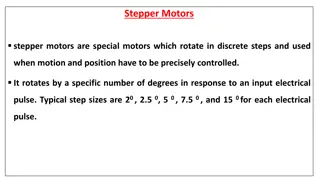

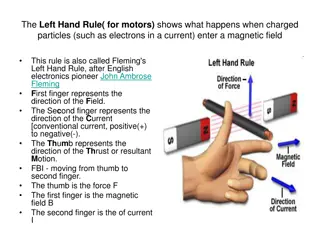
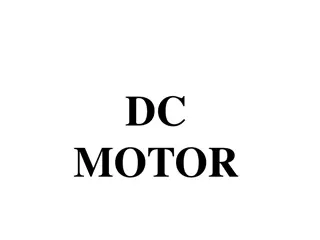
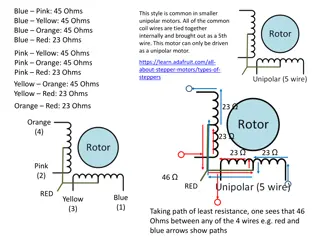
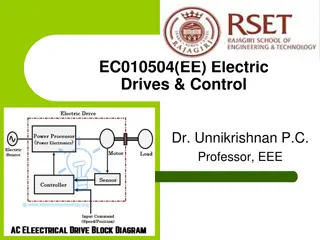
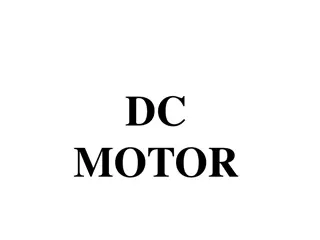
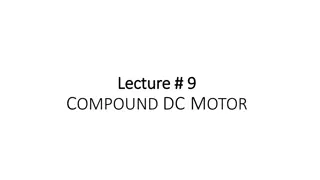
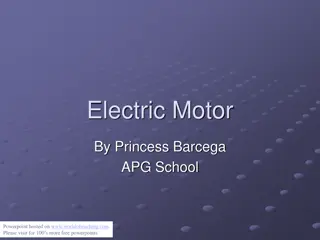
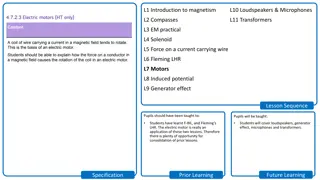
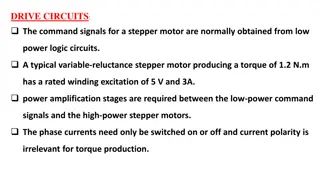


![USA Swimming and [Insert LSC Here] Starter Clinic Overview](/thumb/162824/usa-swimming-and-insert-lsc-here-starter-clinic-overview.jpg)

